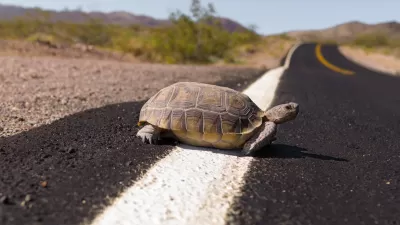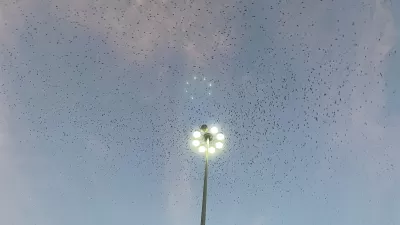The ‘Room to Roam Act’ would require cities and counties to consider local habitats and the impact of development on wildlife corridors and connectivity.

A proposed California bill dubbed the “Room to Roam Act” would require general plans to consider “fish, wildlife, and habitat connectivity,” signaling a shift toward more conservation-minded development.
According to a blog post on the Nossaman LLP website, Assembly Bill 1889 would require cities and counties to make the necessary updates to their general plans by January 1, 2026. “Section 1 of the Room to Roam Act would require local jurisdictions to ‘consider and implement measures to avoid, minimize, and mitigate impacts to fish, wildlife, and habitat connectivity from existing and planned land uses within their jurisdictions.’”
The post adds, “The updated conservation element must: identify and analyze connectivity, permeability, and natural landscape areas within the jurisdiction; identify and analyze wildlife passage features; consider impacts of wildlife barriers caused by development and avoid, minimize and mitigate these impacts; and analyze and consider options to remediate barriers to wildlife connectivity and restore degraded habitat and open landscape.”
The bill could help cities balance conservation, housing, and climate resilience, but may also lengthen the development approval process.
FULL STORY: California’s “Room to Roam Act:” Factoring Wildlife Connectivity Into Land Use Planning

Maui's Vacation Rental Debate Turns Ugly
Verbal attacks, misinformation campaigns and fistfights plague a high-stakes debate to convert thousands of vacation rentals into long-term housing.

Planetizen Federal Action Tracker
A weekly monitor of how Trump’s orders and actions are impacting planners and planning in America.

San Francisco Suspends Traffic Calming Amidst Record Deaths
Citing “a challenging fiscal landscape,” the city will cease the program on the heels of 42 traffic deaths, including 24 pedestrians.

Defunct Pittsburgh Power Plant to Become Residential Tower
A decommissioned steam heat plant will be redeveloped into almost 100 affordable housing units.

Trump Prompts Restructuring of Transportation Research Board in “Unprecedented Overreach”
The TRB has eliminated more than half of its committees including those focused on climate, equity, and cities.

Amtrak Rolls Out New Orleans to Alabama “Mardi Gras” Train
The new service will operate morning and evening departures between Mobile and New Orleans.
Urban Design for Planners 1: Software Tools
This six-course series explores essential urban design concepts using open source software and equips planners with the tools they need to participate fully in the urban design process.
Planning for Universal Design
Learn the tools for implementing Universal Design in planning regulations.
Heyer Gruel & Associates PA
JM Goldson LLC
Custer County Colorado
City of Camden Redevelopment Agency
City of Astoria
Transportation Research & Education Center (TREC) at Portland State University
Jefferson Parish Government
Camden Redevelopment Agency
City of Claremont





























